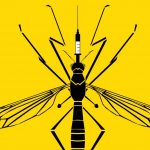The Human Superorganism
Science sheds light on how our genes shape our friendships and how these in turn influence our emotions such as happiness and our habits such as smoking
 Hartosh Singh Bal
Hartosh Singh Bal
 Hartosh Singh Bal
|
02 Sep, 2009
Hartosh Singh Bal
|
02 Sep, 2009
/wp-content/uploads/2015/11/organism1.jpg)
How our genes shape our friendships and how these, in turn, influence emotions
From the care of the dying to an understanding of human happiness is a long journey, but it has taken Professor of Medical Psychology at Harvard Nicholas Christakis less than a decade. Along the way he has rewritten our view of human society. His work, which has seen him figure on Time magazine’s 2009 list of the 100 people who most affect our world, shows that we are all part of a vast social network, linked together by chains of friendships which are under the influence of our genes. Through this network, emotions such happiness and tendencies such as obesity or smoking travel felicitously, almost like waves, creating ripples in which individuals are caught up.
In this vast network we are not just influenced by friends but by friends of friends and friends of friends of friends. The effects that extend up to 3-degrees of separation far exceed what we may consider obvious. For example, consider a small network composed of three individuals, persons A, B and C. The first person, A, is friends with B, and B is friends with C, but A and C do not know each other. If C quits smoking, A’s chances of not smoking go up 30 percent, regardless of whether or not B smokes.
Or take another set of surprising results. The closest relationship in your life, with your romantic partner, has far less impact on your happiness than the mood of your friends of the same gender. It turns out that happiness spreads more effectively through same sex relationships than relationships (romantic or not) between a man and woman.
The best contribution to your happiness is made by a happy friend of the same gender living less than a kilometre away. This boosts your chance of happiness by as much as 42 per cent. Each additional happy friend increases your probability of being happy by about 9 per cent. For comparison, a 10 per cent hike in your income increases the probability of being happy only by about 2 per cent. Astoundingly, if your friend’s friend’s friend becomes happy, that has a bigger impact on your being happy than a 10 per cent salary hike. A happy spouse increases your chances of happiness by 8 per cent. Colleagues, if they are not friends, have no impact at all.
For Christakis, the implications are clear, as he tells Open, “It makes as much sense to ask an individual why he is happy, as it does to ask a bird in a flock why it has turned left. The bird does so because all the other birds are turning left. In the same way, humans experience emotions as a collective, not as individuals. We are a superorganism much like a flock of birds or a herd of deer.’’
This view of human society, which brings us far closer to an ant colony or a beehive than we would like to believe, was hardly obvious when Christakis started his work. Till 2001, he was a hospice doctor in Chicago tending to the dying in their homes. There were always relatives around and his work involved extending care to them as well. He noticed that a person’s illness or death could lead to the illness or death of those close to them. The more he thought about it, the more he began to suspect that this was not only a question of one person being directly impacted by another, the impact was far wider. He describes what for him was a typical case: “A woman who was dying and her daughter who was caring for her. The mother had been sick for quite a while and she had dementia. The daughter was exhausted from years of caring for her, and in the course of caring, she became so exhausted that her husband also became sick from his wife’s preoccupation with her mother. One day I got a call from the husband’s best friend, with his permission, to ask me about him. So here we have the following cascade: parent to daughter, daughter to husband, and husband to friend. That is four people—a cascade of effects through the network. And I became sort of obsessed with the notion that these little dyads of people could agglomerate to form larger structures.’’
Seven years ago, he and his colleague, James Fowler at the University of California at San Diego, began to study these larger structures. “We studied two things, one was what determines the shape and pattern of these networks and gives it structure, and the second relates to what flows through the networks—how we are influenced by people around us.’’
The first part of the work, determining the shape and pattern of the network, is the most recent, published only in January this year. They researched 1,100 same-sex twins who were part of the National Longitudinal Study of Adolescent Health. The study examined high school students in the US in 1994-95 and asked questions regarding economics, physical health and social involvement. Christakis and Fowler compared the social networks and patterns of identical same-sex twins against fraternal ones to separate nature (genes) from nurture (upbringing).
It turns out the number of times a person was listed as a friend and the chances that a person’s friends knew each other were genetically influenced. The same influence, however, did not extend to the number of people an individual lists as friends. In other words, it is not an individual’s self-perception of the number of friendships, but rather the actual popularity of a person, as seen by others, that is influenced by the genes. The person’s popularity, in turn, determines the shape of the network.
A person is at the centre of a network if named by many as a friend or at the periphery if named by very few as a friend. The connections in the network are determined by an individual’s tendency to either introduce or not introduce friends to each other, which is how they would either be connected or not, and this is also under the influence of our genes.
Taken together, Christakis notes, “This seems to indicate that natural selection is acting on not just things like whether or not we can resist the common cold, but also who it is that we are going to come into contact with.” At first, this may seem strange—after all, the benefits of popularity are easy to see but it is more difficult to see the benefits of being a loner. But there are conditions under which even being a loner is a significant advantage. Take the current swine flu pandemic—if it grows and spreads as rapidly as expected, people who remain cut off from others are far less likely to be infected.
Thus, natural selection acting on humans seems to have set in place a social network that we are all part of, to greater or lesser degree. In turn, this network seems to determine our emotions and habits. The implications are rather staggering. Much as is the case with ants and bees, we may be indirectly controlled and influenced not just by our genes but by the genes of people unrelated to us and unknown to us.
For example, Christakis has shown that obesity also spreads through networks. Having an obese friend increases one’s likelihood of obesity by 57 per cent, with a smaller effect for siblings and spouses. This risk of developing obesity rises to 171 per cent for the closest mutual friendships. Having very overweight neighbours has no effect on obesity if those neighbours aren’t friends, but the effect of friends again extends to 3-degrees of separation. This means that a friend of a friend of a friend, a person you may not even know, can influence your weight.
They found that unlike in the case of happiness (which is more transitory and may need constant reinforcement that proximity provides), when it comes to obesity, distance does not matter. You gain weight if your friends gain weight, irrespective of whether they are next door or thousands of kilometres away. According to Christakis, “This would suggest that in case of obesity, we are not copying behaviour, but a norm—for a behaviour to spread, typically, you and I would have to be together. We would have to go running together, share meals together, or copy each other’s behaviour in some way… But a norm can fly through the ether. I might see you once a year and see that you have gained a tremendous amount of weight, which resets my idea about what an acceptable body size is.’’
Christakis and Fowler believe that the impact of this network of friends and friends of friends and friends of friends of friends is likely to extend to feelings and behaviours such as depression, anxiety, loneliness, drinking, eating, exercise and other health-related activities. This belief is now finding confirmation from an independent source—social networks we have created online.
So far, they had mined their data from the Framingham Heart Study, which has kept track of data related to thousands of individuals in the US through 32 years (1971–2003). More recently, they have focused attention on another phenomenon that offers them a ready-made social network—Facebook.
They selected a group of 1,700 college students who were interconnected on Facebook. From their online profiles and the photographs that had been put up, they narrowed down the list of friends to those who appeared together in photographs put up on the profiles and had been ‘tagged’. While the average student had about 110 students on Facebook, the number of ‘picture friends’ averaged about six.
They then studied whether the students were smiling or not in their profile pictures. When they mapped out the entire network of `picture friends, they found that people who are smiling in their profile pictures tend to have more friends (smiling gets you an average of one extra friend, which is pretty good considering that people only have about six close friends).
Not only that, but the statistical analyses confirm that those who smile are measurably more central to the network compared to those who do not smile. That is, if you smile, you are less likely to be on the periphery of the online world. Either way, online or offline, they noted, if you smile, the world smiles with you.
Faced with their work, some questions are almost immediate and are likely to be the subject of much debate, both by scientists such as them as well as in popular discourse. Consider a few.
To what extent are we free to act, and to what extent are we constrained by our social network? Well, we may not be able to do much about whether we are popular or not, but there are other choices that are ours to make. For example, if living close to a friend who is happy makes so much difference to our happiness, then when buying a house should proximity to such a friend count for more than, say, a neighbourhood park or likely escalation in property prices?
Or, for that matter, would it not make sense to cultivate the ‘happy’ friendships that we do have? Christakis believes that social networks evolved at a time when human beings lived in small hunter gatherer bands of a hundred to hundred-and-fifty people. This would explain why offline or online, we tend to have five to six close friends on average.
This may also go some way to explaining the 3-degrees of separation affect. In groups of this size, this degree of separation is about the maximum that can exist, and this is something that has stayed with us even when we are part of a much larger society. So new ‘friends’—say, on Facebook—have far less impact on our lives, both for better and worse, than the few friends who are actually close to us.
And last but not least, has modern society tended to overemphasise the importance of romantic love in our happiness? It seems over the long run even a happy spouse can affect your happiness far less than close friends of the same gender. Male or female bonding then would make perfect sense in this context. In fact, it now does seem that traditional societies, with their nurturing of friendship through gift giving and reciprocity, seem to have known far more than we do about how our lives are shaped.
Whatever our individual answers to these questions may be, what remains true is that Christakis and Fowler are in the process of shaping our view of ourselves and our society. Certainly, it makes far more sense today to say we are all connected.

/wp-content/uploads/2025/02/Israel.jpg)











More Columns
Passion for the Preloved Saumyaa Vohra
Mum’s the Word Kaveree Bamzai
Losers Back Home, On Top in Thailand Kaveree Bamzai